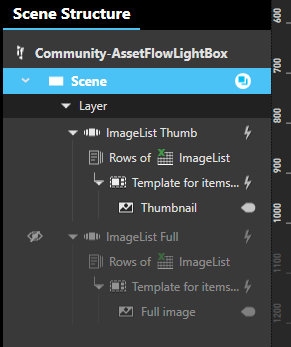Hi Brian,
Here is one way to do it:
- 2x Asset Flow, one with Thumbnails, one with Full Images (hidden by default)
- when a thumbnail is tapped, hide the Thumbnail Asset Flow, show the Full Image Asset Flow
- when a big image is tapped, show the Thumbnail Asset Flow, hide the Full Image Asset Flow
- when an Asset Flow is scrolled to an index, scroll the other to the same index

Here is a link to a Sample:
https://data.intuiface.com/KB-Samples/6.6/Community/Community-AssetFlowLightBox.zip (55Mb)
Kind regards,
Alex.